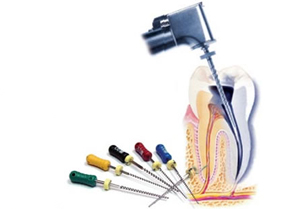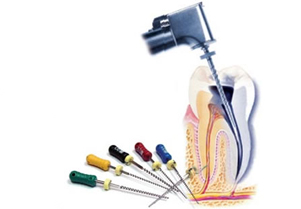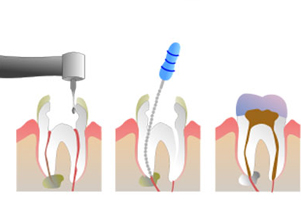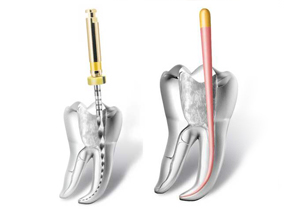SERVICII

Endodontics
Description
What is endodontic treatment?
Endodontic treatment removes infected or damaged tissue from inside a tooth. This tissue, called the pulp, contains nerves and blood vessels that help nourish the tooth. After the pulp is removed, the pulp chamber and root canals arc cleaned, disinfected, filled and sealed.
How long is the treatment?
The endodotnic treatment varies from each pacient and can take several appointments The Root Canal Therapy procedure
Following a thorough clinical examination and review of your x-rays, a tailored treatment plan is developed, which will outline the most appropriate course of treatment for your personal situation. Endodontic treatment is generally completed in one to three appointments, depending on the extent of the infection and your current state of oral and general health.
For your comfort, a local anaesthetic is usually administered to numb your tooth and surrounding area, making fora comfortable procedure.
Once the pulp is removed, your root canals are cleaned, disinfected and reshaped.
The next step is to fill the root canals with a biocompatible material, usually tiny cones of rubber-like material called "gutta-percha" that prevent re-infection. In most cases, a temporary filling is placed over the access opening.
After your tooth has been successfully treated, it is important you schedule an appointment with your dentist so any temporary filling can be replaced with a permanent restoration, most often a crown. In some cases where there has been extensive damage to the natural tooth structure, a post may be required to aid in the retention of the crown.
What is Endodontic Retreatment?
Teeth that have had endodontic (root canal) treatment can last as long as natural teeth, however, in some cases the treatment can fail or symptoms can persist. This may happen shortly after the treatment has been performed or even years following the treatment.
In these cases it may be possible to carry out the treatment again, a procedure called endodontic retreatment.



